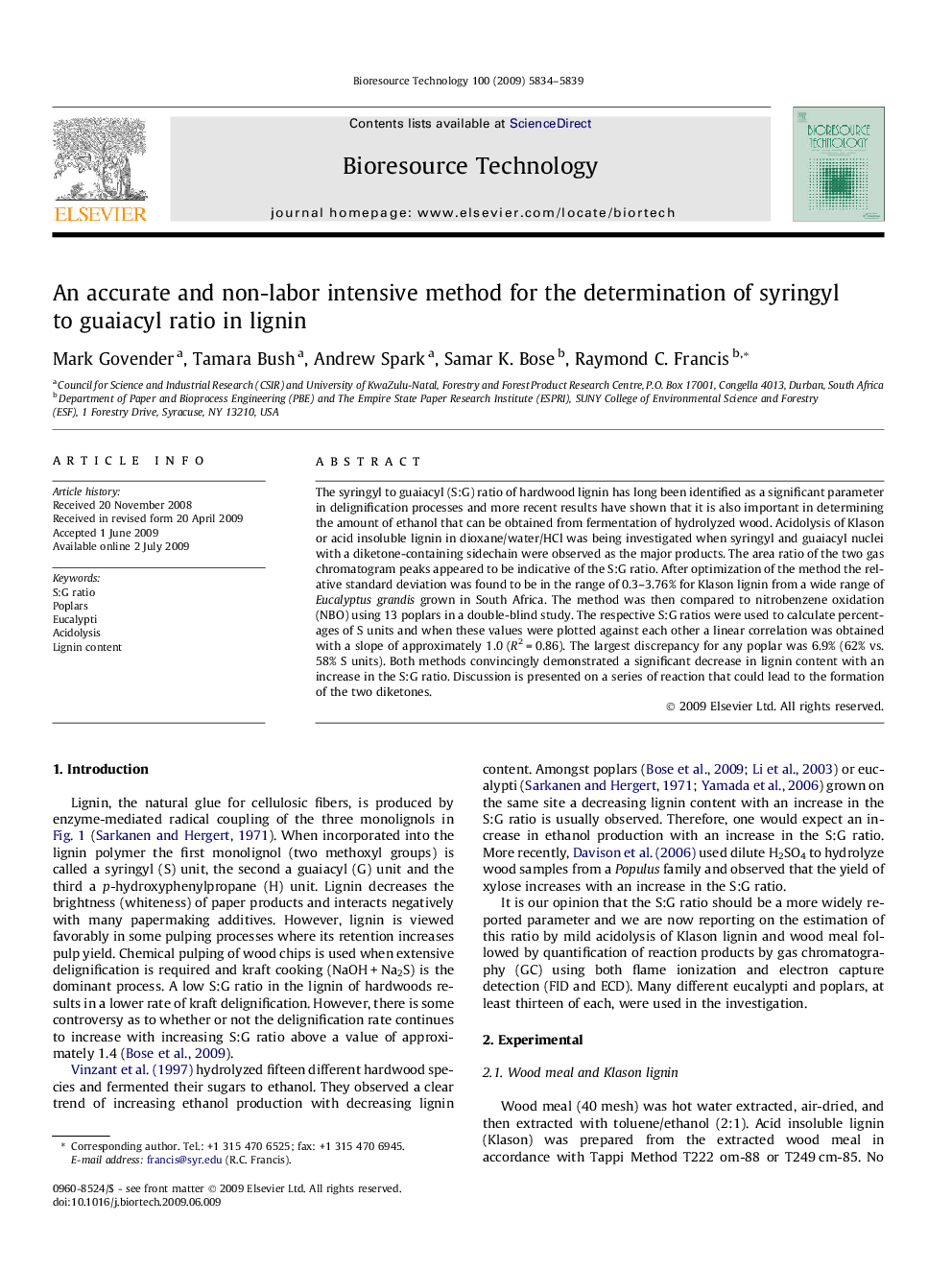| Article ID | Journal | Published Year | Pages | File Type |
|---|---|---|---|---|
| 683359 | Bioresource Technology | 2009 | 6 Pages |
The syringyl to guaiacyl (S:G) ratio of hardwood lignin has long been identified as a significant parameter in delignification processes and more recent results have shown that it is also important in determining the amount of ethanol that can be obtained from fermentation of hydrolyzed wood. Acidolysis of Klason or acid insoluble lignin in dioxane/water/HCl was being investigated when syringyl and guaiacyl nuclei with a diketone-containing sidechain were observed as the major products. The area ratio of the two gas chromatogram peaks appeared to be indicative of the S:G ratio. After optimization of the method the relative standard deviation was found to be in the range of 0.3–3.76% for Klason lignin from a wide range of Eucalyptus grandis grown in South Africa. The method was then compared to nitrobenzene oxidation (NBO) using 13 poplars in a double-blind study. The respective S:G ratios were used to calculate percentages of S units and when these values were plotted against each other a linear correlation was obtained with a slope of approximately 1.0 (R2 = 0.86). The largest discrepancy for any poplar was 6.9% (62% vs. 58% S units). Both methods convincingly demonstrated a significant decrease in lignin content with an increase in the S:G ratio. Discussion is presented on a series of reaction that could lead to the formation of the two diketones.
